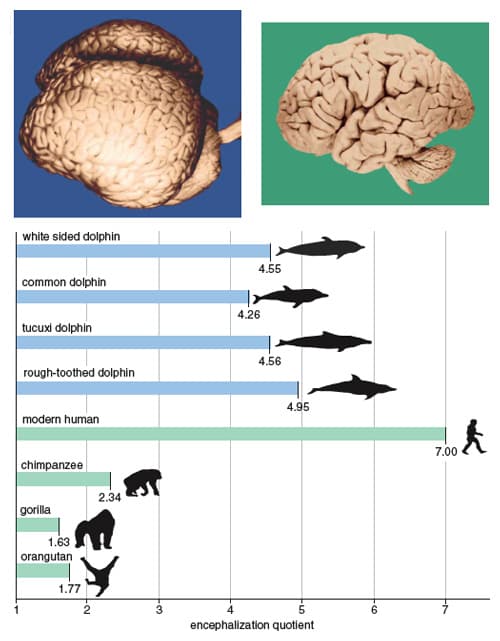Dolphins' EQ of 5 Positions Them Second to Humans in Brain-to-Body Ratio

A recent social media post from "Flippening Facts" highlighted the impressive encephalization quotient (EQ) of dolphins, stating it stands at 5. This metric, which measures the ratio of an animal's actual brain mass to its predicted brain mass for its size, positions dolphins significantly above chimpanzees, which have an EQ of 2.5, though still below humans, typically recorded around 7.
The encephalization quotient is widely used as an indicator of relative intelligence, suggesting that a higher ratio correlates with greater cognitive capabilities beyond basic bodily functions. While humans consistently exhibit the highest EQ among species, the dolphin's score underscores its remarkable brain development in the animal kingdom. This high EQ is a key factor in scientific discussions about cetacean intelligence.
Beyond the EQ, dolphin brains possess other notable characteristics that contribute to their advanced cognitive functions. Bottlenose dolphins, for instance, have an absolute brain mass of 1,500–1,700 grams, which is larger than the average human brain mass of 1,300–1,400 grams. Their cerebral cortex also features extensive folding, or gyrification, exceeding that of humans, and they possess specialized spindle neurons, previously thought unique to humans and great apes, linked to complex social behaviors.
Dolphins demonstrate a wide array of sophisticated cognitive abilities, including self-awareness, evidenced by their capacity to recognize themselves in mirrors. They engage in complex social interactions, exhibit problem-solving skills, and utilize tools, such as the "sponging" behavior observed in some populations. Their communication systems are intricate, and research suggests they possess metacognition, the ability to think about their own thinking.
Despite the utility of the encephalization quotient, some scientists debate its absolute validity as the sole measure of intelligence, particularly when comparing species with vastly different body compositions like the blubber-rich dolphins. Alternative metrics, such as the total number of neurons or the brain's organizational complexity, are also considered crucial. Nevertheless, the consistent findings regarding dolphins' high EQ and diverse cognitive skills firmly establish them as one of the most intelligent non-human species.